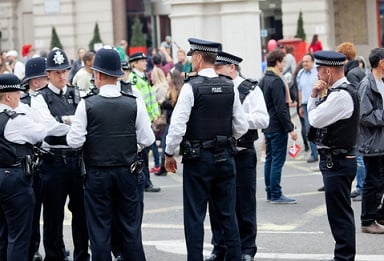The international terrorism threat in the UK is currently rated severe, meaning another terrorist attack is highly likely. But how can businesses react to terrorism threat levels?
What has become painstakingly clear is that terrorists have the intent of causing mass casualties by any means possible. While security has tightened in many potentially threatening areas, little can be done to prevent vehicle attacks and the use of homemade, improvised weaponry.
Paul Bassett, managing director, and Justin Priestly, director of crisis management at Arthur J.
Gallagher, spoke to Insurance Business about how businesses can better prepare to keep their prevention and security measures in line with the terrorism threat level.
“Businesses can’t do anything about the threat – but they must be aware of it,” said Bassett. “At Arthur J. Gallagher we advise businesses to organise their activities into four pillars: anticipate, prevent, respond and recover.
“The changing nature of threats presents different challenges to businesses and demands an equally dynamic response from those specialising in risk management and insurance.”
He added: “Specialised insurance products are available but they are still relatively new in the stand-alone terrorism insurance market. Business people haven’t been that focused in looking at how their insurance works. We would recommend they review their insurance coverages with their brokers to make sure they have fit-for-purpose and cost-effective cover in place.”
Brokers at Arthur J. Gallagher have been working with companies to establish a culture of crisis resilience and awareness. An underlying factor of that culture is education. Businesses need to assist the government by educating clients about the terror threat level and how to respond to it. The company has also introduced a number of schemes and tools to show businesses how to mitigate and prevent potential terrorist threats.
“Once you understand the threat to your business, it’s then a case of how you can mitigate and prevent those sorts of things from happening. The easiest thing to do is to educate your workforce and educate the people who are coming into your building. We call that situational awareness,” said Priestly.
There are various ways to mitigate threat, according to Priestly. Education is key and so is the collection of information and intelligence. Businesses can contribute to this intelligence by keeping accurate logs and using CCTV effectively.
“Businesses could use CCTV cameras to look out of the building or premises and collect data when things are happening,” Priestly told Insurance Business. “There’s a whole lot of low-level information that is now being filtered up and turned into intelligence. The security services are doing a lot for UK business by using this low-level information to create an intelligence picture to prevent things from happening.”
Arthur J. Gallagher has compiled a global terrorism database, made by (in simplified terms) plotting client risk portfolios onto a map. The database categorises where terrorists are likely to target and provides valuable risk data for clients.
Priestly explained: “We are able to sit with clients and look at where they are potentially vulnerable. What we are then able to do is run realistic disaster scenarios against our client’s assets to look at any potential impact to their people or buildings. This enables clients to quantify what their losses might be.”
Related stories:
Brokers – time to cut the “gobbledygook”
How Manchester and London shook up terrorism insurance


